This blog will answer common questions about colour coded cleaning, including how it is used and why it’s so important.
Table of contents
- What is the cleaning colour codes chart?
- Why is colour coding so important?
- Where should I use colour coded cleaning?
- What cleaning equipment should be colour coded?
- How should i store colour coded cleaning equipment?
- Do I have to use colour coding in cleaning?
- Tips to set up an effective colour coded cleaning system
- Summary
What is the cleaning colour codes chart?
The BICSc cleaning colour codes chart is broken down into four distinct categories.
- Red: Areas where the risk of cross-contamination is high e.g. toilets and shower rooms.
- Green: Areas where the risk of cross-contamination is medium e.g. kitchens and food station areas.
- Blue: Areas where the risk of cross-contamination is low e.g. general areas.
- Yellow: Generally used in clinical settings e.g. colour coding of cleaning equipment in hospitals.
Tip: These guidelines can be adjusted to suit your specific business needs. For instance, restaurants and warehouses may use different colours for different areas. Some companies may also find it more practical to adopt a bespoke colour coding system.
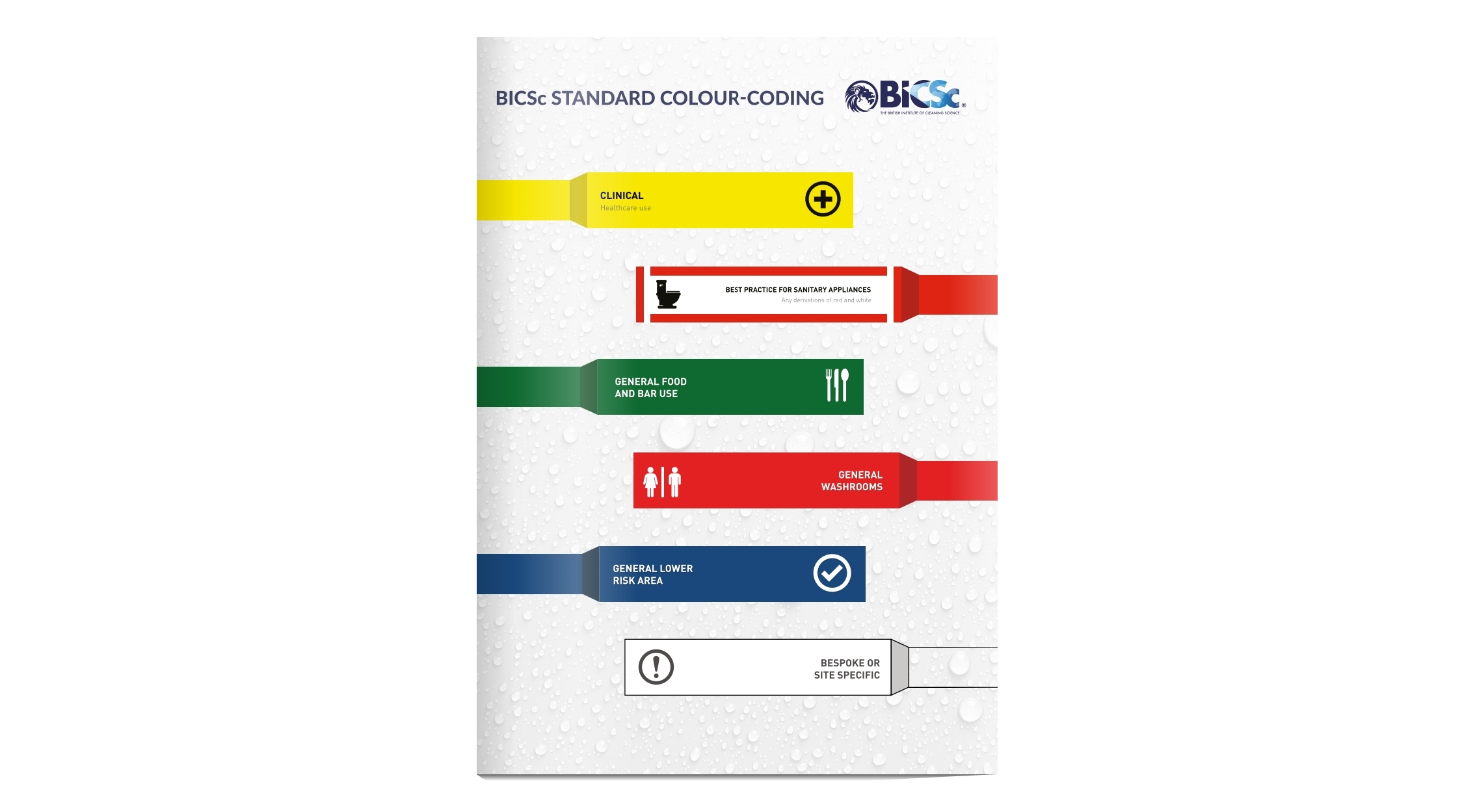
Why is colour coding so important?
Colour coding cleaning practices involve using different coloured cleaning equipment for different areas. This reduces the risk of bacterial contamination and helps to keep workplaces, public areas, and other spaces hygienic and safe.
Minimise the risk of infection
One study found that the surfaces in a public toilet have 500,000 bacterial cells per square inch, on average. The risk of spreading bacteria is extremely high if a cleaner uses the same equipment when cleaning different areas.
Reduce the spread of viruses
This can cause the spread of serious infections and viruses such as Salmonella, E. coli, and Coronavirus. Various industries have adopted colour coding cleaning practices to prevent bacterial contamination and reduce the risk of infection.
Where should I use colour coded cleaning?
Colour coded cleaning should be used in all key areas of your building including shower rooms and toilets, kitchens and food station areas, and general areas.
For a colour coded cleaning system to be effective, you need to assign a different piece of cleaning equipment to each area. For instance, effective mop colour coding may label a mop used to clean toilets with a red label and a mop used to clean kitchen areas with a blue label.
What cleaning equipment should be colour coded?
The majority of your cleaning equipment should be colour coded if you want to maintain the highest levels of hygiene in your workplace. The list of items is extensive, but here are some key cleaning supplies you should keep colour coded:
- Mops
- Mop buckets
- Brushes and dustpans
- Cleaning gloves
How should I store colour coded cleaning equipment?
It is extremely important that you avoid storing cleaning supplies with different colours in the same location. Cross-contamination can easily occur if a piece of cleaning equipment touches another piece of equipment.
This would render your colour-coded cleaning system pointless and could have serious health consequences.
Storing colour coded cleaning equipment safely.
Cleaning equipment should be stored within its own colour coded cupboard or shelf to minimise the risk of cross-contamination. Make sure that areas are clearly labelled e.g. have a red shelf, a blue shelf, and so on.
Do I have to use colour coding for cleaning?
According to BICSc: “With the exception of the healthcare industry, there are currently no compulsory standards regulating the cleaning industry.” This means there is no legal requirement to introduce or follow a colour coding cleaning system.
However, many businesses recognise the benefits of using this cleaning process and colour code systems have been adopted in many industries.
5 benefits of colour coding cleaning practices
- Streamline your cleaning process and make cleaning more consistent and effective.
- Improve your brand image and reputation by maintaining high hygiene standards.
- Protect your employees and visitors from exposure to infections and viruses.
- Minimise the risk of cross-contamination in the workplace.
- Identify low-risk and high-risk areas in your workplace.
Industries that use colour coded cleaning
- Administration e.g. offices
- Hospitality and catering
- Healthcare
- Education
- Industrial
- Construction
- Retail
Tips to set up an effective colour coded cleaning system
Purchase new cleaning equipment
It is a good idea to purchase new equipment if you are implementing a colour coded cleaning system in your workplace.
Did you know that an average mop head can contain more than 2000 bacteria per square inch while a toilet seat has just 50 bacteria per square inch? This is why it is so important to use mop colour coding and replace equipment regularly – especially if it is used to clean high-risk areas.
Buy professional cleaning supplies online
The Ultima Store stocks a wide variety of professional cleaning supplies including everything from general cleaning products to specialist sanitation equipment.
You can browse products from leading cleaning company brands online and have items delivered directly to your home or workplace.
Suggested reading: Want to know how to dispose of old cleaning products safely? Check out our recent blog.
Make the system easy to follow
Businesses can choose what colour coded cleaning practices they want to implement in the workplace. This allows for flexibility, but you must choose a system that is straightforward and easy to follow.
If your colour coded cleaning guidelines are too complex, team members may get confused and stop following them. This may lead to cross-contamination which could have a serious and lasting impact on your business.
Train employees on colour coding cleaning practices
You can decide which colour you assign to each area, so you need to make sure your employees are trained on the colour coded cleaning system you choose.
Offer regular refresher training and monitor cleaning practices closely to ensure that guidelines are being followed.
TIP: BICSc offers a free colour coding cleaning course that will give you a good understanding of the importance of colour coding for cleaning and how to use it in the workplace.
Summary
Cross-contamination should be a key concern for every business and cleaning professional. Following colour coding cleaning practices is one of the best ways to overcome this challenge and keep your workplace clean and hygienic.
Remember that an effective cleaning system will keep your workplace sparkling, while also making sure that your environment is safe for your employees and visitors.
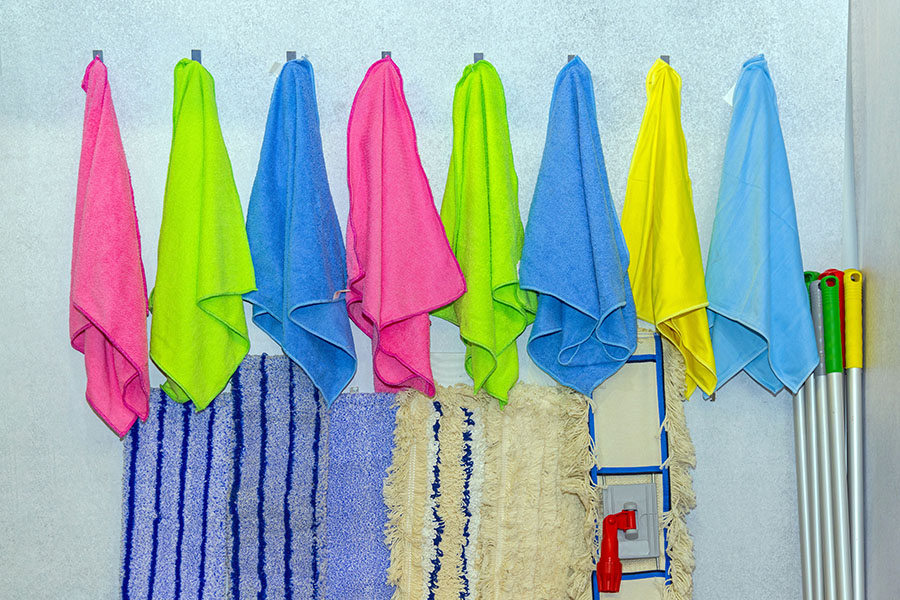
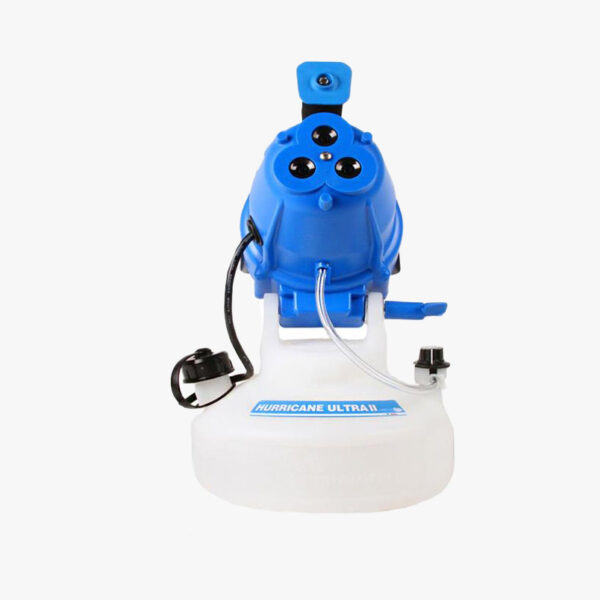
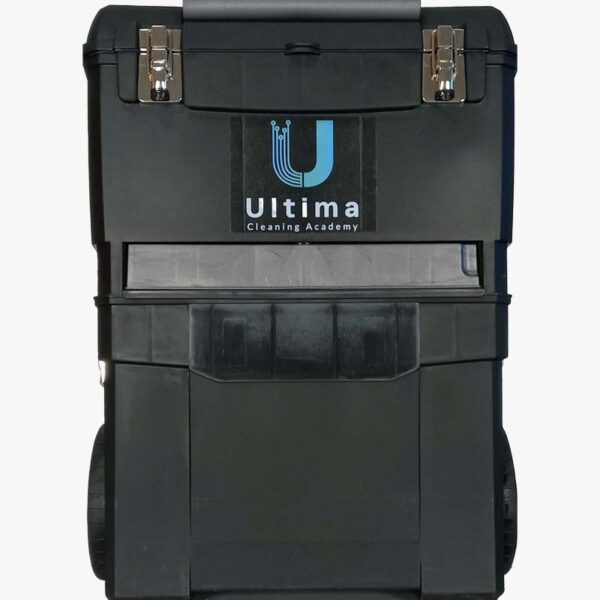
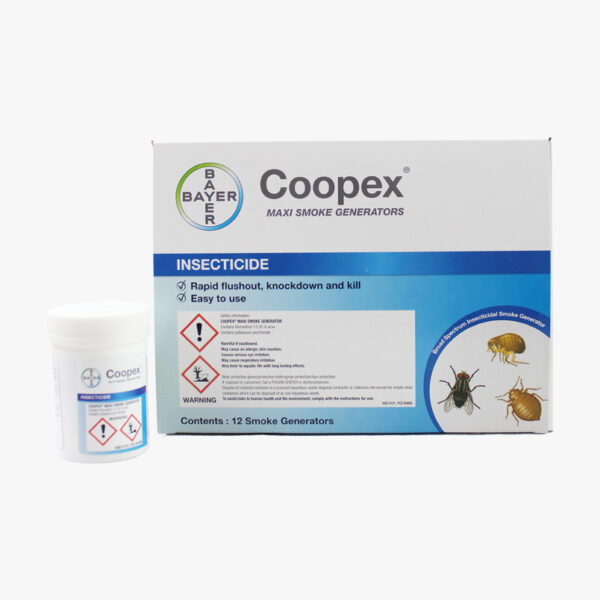
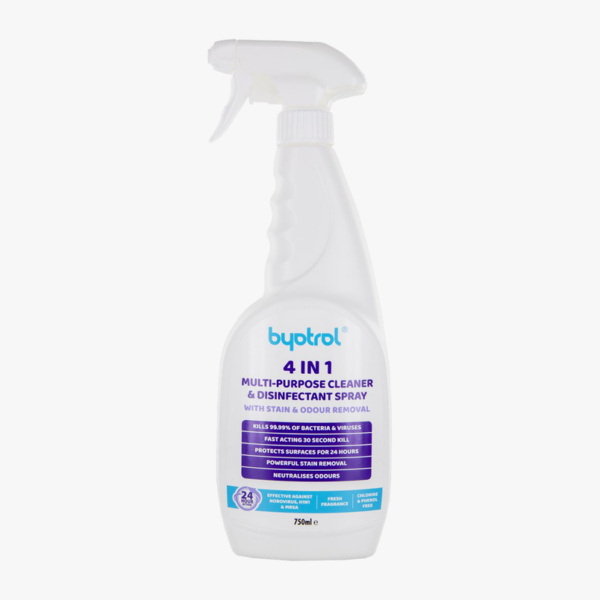
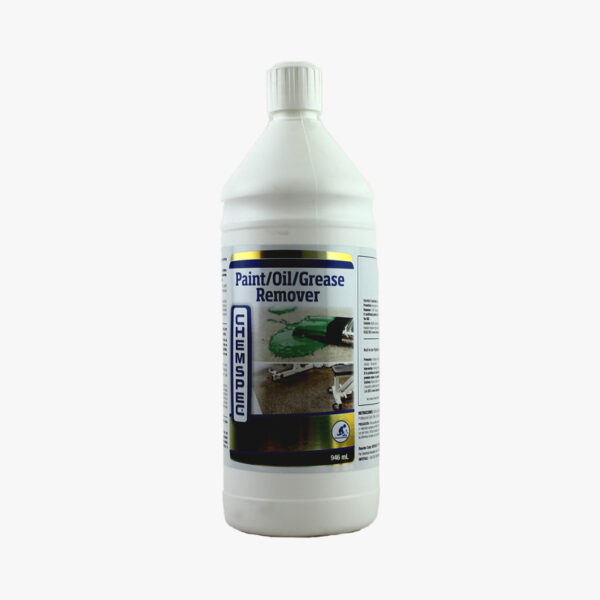
I work in a football practice ground as a cleaner. My job is cleaning changing and shower rooms, male and female toilets, the bar tables and floors, training room and cellar. Like you all say the codes are different where ever you work
Yes Automatically clour code is important. In order to minimize cross contamination of bacteria.